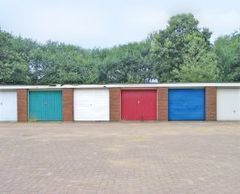Gas Heater for Garage
Updated: 2022-01-13
By Paul Bianchina
Frozen fingers and numb toes don't make for the most pleasant experience while you're in your shop hand-crafting that cherry bookcase, or in the garage rebuilding a carburetor. It might be time to consider adding some heat to those spaces, and making life a little more comfortable.
Natural gas and propane heaters can offer clean and safe heat for your garage, woodshop, barn, or other work areas. Portable and permanently installed models are available, both vented and non-vented.
SHOPPING FOR A HEATER
The first decision is what type of fuel to use. If natural gas is already available at the property, it makes sense to power your shop heater with gas as well. If not, propane models are available that are supplied by a propane tank that is placed above or below-ground on your property. DO NOT try to operate a natural gas heater with propane, or vice-versa.
Fuel-fired shop heaters are rated in BTUs of heat output. To decide on the right heater for your shop, the ideal way to do it is to perform a heat-loss calculation first. Heat-loss calculations take insulation, weather-stripping, windows, and several other factors into consideration, with the end result of all the calculations telling you how many BTUs the heater would need to put out to heat that space. If you have a large shop, barn, or other space, it makes sense to talk with your local natural gas or propane supplier or with a heating contractor to have the necessary calculations done.
Frozen fingers and numb toes don't make for the most pleasant experience while you're in your shop hand-crafting that cherry bookcase, or in the garage rebuilding a carburetor. It might be time to consider adding some heat to those spaces, and making life a little more comfortable.
Natural gas and propane heaters can offer clean and safe heat for your garage, woodshop, barn, or other work areas. Portable and permanently installed models are available, both vented and non-vented.
SHOPPING FOR A HEATER
The first decision is what type of fuel to use. If natural gas is already available at the property, it makes sense to power your shop heater with gas as well. If not, propane models are available that are supplied by a propane tank that is placed above or below-ground on your property. DO NOT try to operate a natural gas heater with propane, or vice-versa.
Fuel-fired shop heaters are rated in BTUs of heat output. To decide on the right heater for your shop, the ideal way to do it is to perform a heat-loss calculation first. Heat-loss calculations take insulation, weather-stripping, windows, and several other factors into consideration, with the end result of all the calculations telling you how many BTUs the heater would need to put out to heat that space. If you have a large shop, barn, or other space, it makes sense to talk with your local natural gas or propane supplier or with a heating contractor to have the necessary calculations done.

For the average garage or small shop, however, the manufacturers of most shop heaters will tell you that a particular heater is capable of heating a space of a particular square footage. Those numbers tend to be a little optimistic and assume fairly ideal circumstances, so it's best to use them only as a rough guide. If your shop has tall ceilings, lots of air leakage, poor insulation, or other factors that make it harder to heat, you need to decrease the recommended square footage accordingly (and also take some steps to plug the leaks and beef up the insulation).
Permanently mounted heaters are available for mounting on both the wall and the ceiling, and typically come with all of the necessary hardware for installation. Each heater will have manufacturer-specified clearances that must be maintained between the heater and any combustible surface or material, so be sure you read and understand all of the heater's clearance specifications, and be sure the unit is installed properly.
Heaters are also available in both vented and non-vented models. Vented heaters utilize a specific type of double-wall flue pipe, and here again specific clearances need to be maintained between the pipe and combustible materials. Also, remember that the vent needs to be taken all the way to the outside of the building -- not into an attic or crawlspace - and needs to have the proper termination cap on top.
SAFETY FIRST
Burning natural gas or propane requires oxygen, and during the combustion process, air is drawn from the room for use in the heater. This air needs to be replaced or the room will become dangerously depleted of oxygen, so makeup air is a consideration with the installation of any fuel-fired heater.
Makeup air can come from many difference sources. If the shop is large enough, a sufficient amount of air is present to fuel the combustion process without causing any safety concerns. In smaller shops, it may be necessary to install a small outside air intake vent in the wall or floor to provide the needed air. If makeup air specifications are not included with the heater's installation instructions, check with the manufacturer, dealer, or your local building officials for recommendations.
To ensure safe operation, some heaters now come equipped with a low-oxygen shutoff valve. The valve senses how much oxygen is present in the air, and should that oxygen level fall below a certain point, the valve will shut the fuel off to the heater.
Another safety precaution is the installation of a carbon monoxide detector. Carbon monoxide is a byproduct of the combustion process, and a detector installed in the same room as the heater will warn you if the levels of this potentially deadly gas exceed certain preset safe limits.
Comments (0)
